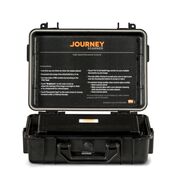Using in-cab scanning to invoice your customers.
Using in-cab scanning to invoice your customers. Can you do it before the fleet vehicle leaves the customer site?
Fleets depend on accurate information from their vehicle drivers in order to invoice their customers correctly the first time. Inaccurate or missing information can delay payment or worse, harm your company’s reputation if it happens too many times with the same customer.
In order to invoice accurately and timely, information like piece count, weight, product value (insurance), speed of service required, special handling, re-weigh and extra services must be communicated timely and accurately. Additionally, written proof of these services is usually required to accompany the invoice so that payment can be made. If you cannot take payment at pick up or delivery (credit cards for example) and need the documents the driver has immediately or sooner than later, then imaging the documents in the vehicle before the driver leaves the customer’s site may be the solution for you.
Solutions already available:
- Scanning documents at designated scanning locations on the road: Truck stop scanning is a common form of getting documents back to the office. There are some problems with this approach though:
- Costs can be higher than having your own scanner in your vehicle.
- Truck stops with scanning available may be out of route
- Time spent at the truck stop waiting in line to use the scanner, or just chatting can cause unintended delays.
- Mailing documents to the office have similar pitfalls as truck stop scanning. The time to get documents back to the office can significantly impact Days Sales Outstanding (DSO). Costs can be higher too.
- Taking pictures can net unreliable results if the picture is too dark, too light, or at the wrong angle making them impossible to invoice from or use for customer copies. Further, when a driver has multiple pages to scan, most picture applications do not have the ability to scan multiple pages as one document so the office gets the documents in pieces.
What are the greatest advantages to in-cab scanning?
Days Sales Outstanding (DSO) is a common way to measure the length of time between completing work for a customer and being paid for that work. Say your company does 50 deliveries per driver per day and each invoice has a value of $100.00. If on average it takes 10 days from delivery until the invoice is created and sent, $50,000.00 of income to the company has been delayed. In a fleet of 5, 10, 50, 100 or more vehicles this delay adds up fast. Mailing documents can take valuable days to compete and often envelopes made for this purpose and small and costly.
Waiting until the paperwork gets back (when the driver returns to the office). Many fleets tell us the drivers can be on the road for two weeks or more at a time. As time passes drivers may lose documents. The longer the time between receiving the documents and using the documents the more chance there is of misplacing, losing all together, or having unusable documents due to spills or missing information that may cause rework. Less than load (LTL) companies who do multiple pickups and deliveries per day, find that their customers can all be invoiced the same day, usually within an hour of pick up or deliver.
How can in-cab scanning improve DSO?
When we analyze DSO, we need to also consider reasons customers slow pay, never day, or pay their invoices for amounts that are less than what was billed.
- Slow pay is when a customer pays beyond payment terms. Reasons for slow pay include: not receiving the invoice timely (service provider created it, but didn’t mail it right away, delayed by U.S. mail service, internally it was sent or delivered to the wrong person or department, once received there was no urgency to pay it, or delayed for other reasons, usually insufficient funds to pay the full amount. Another reason for slow pay is not understanding what the documents say or mean. Sloppy writing or missing information for example can lead to wasted time and delays while people communicate to gain more information. Work performed but not properly documented is the main cause for not being paid for that work.
- No Pay, this happens most commonly due to not providing the necessary back up documentation required for payment. Examples may include a Bill of Lading or Delivery Receipt, signed by both the customer and the carrier but there are many other types of documents that could be required.
- Short Pay usually happens when customers feel they were overcharged or items on their invoice were not clearly communicated. Examples include special services like; inside delivery, protect from freezing or cold, lift gate service required, etc. An example of an invoice amount being higher than expected could be the driver or Carrier changing the original weight of the shipment but not including a forklift scale ticket with the invoice.
Why use rugged document imaging in-cab scanning scanners? 
In-cab scanning scanners stay in the vehicle at all times and are specifically designed for use in a more rugged environment unlike a scanner you may use at your desk. Most scanners on the market are consumer grade quality. If used in trucks, these scanners will freeze up when it gets too cold or get overheated in a truck that’s been sitting in the sun too long. A commercial grade in-cab scanner is rugged enough to withstand the elements of the outside as well as stand abuse from being jarred, bounced, and vibrated in a vehicle every day.
What do Drivers say about rugged in-cab scanners?
We touched on this above, but it bears repeating. Sometimes document pictures from phones are too light or too dark, blurry, taken at the wrong angle or distance from the camera, and the biller can’t read it well enough to invoice the client or worse, the client rejects it.
When this happens the driver will need to re-take the picture and re-send it to the billing office, not something drivers like doing. Worse, if the document is multiple pages phone and tablet cameras don’t have a simple way to handle that. Remember, we want to take just one snapshot of the document and send it to the billing office for use the first time, and not by opening one emailed document at a time and then having to file or deal with all those emails individually. In the meantime the driver is wasting valuable time and money for the company when he could be moving on to the next job. In-cab scanners take all of these things into account and can scan an entire document in less than three seconds, with near perfect images the office can view a few seconds later.
Identification of images:
A multi vehicle fleet company would have a hard time determining which bill of lading and delivery receipts go together, are from what vehicle, and are part of what piece of work. With multiple vehicles scanning their documents into the office simultaneously a good imaging system and process workflow is important!
Features to look for in an imaging system and in-cab scanning:
- The ability for the office to view, save, send and retrieve images quickly. Images should be filed and stored for the length of time required (months, years, or forever) based on the fleet owner’s needs. A system backup should exist should the main data storage system fail a second copy should be kept.
- Sorting and grouping images: These features pull images by transaction number, vehicle number, dates, times, etc. and allow end users to quickly find and group documents as needed.
- The imaging system should be viewable to only those who have permissions set up and approved by the fleet owners. Deleted images should be able to be recreated if needed.
- When possible or as needed, vehicle drivers should be able to add important numbers (like a document number) to an image and be able to select the image type (Bill of lading, fuel receipt, citation, etc.). The most common additional services should be added to the image to, (detention, inside delivery, etc.) to insure the person billing captures the extra service and charges the end customer accurately.
- In-cab scanning should work seamlessly with the in-office web portal: if bar codes are used, they should be automatically read and filed in the appropriate folder, drivers should have the ability to choose the document type they are scanning.
- GPS location verification attached to images can be used to prove the driver was actually at the location at the right time. GPS can be very useful to prove a pickup, delivery, or service call was made.
- Automated workflow can save time by adding important document numbers (shipment number, work order number, etc.) to a dispatch message and automatically attach that number to the scanned image and attach a GPS location point. Automation saves time and can speed invoicing, image retrieval, reduce customer and driver conflicts, and shorten the payment cycle.
Will in-cab scanning help with driver settlements?
Getting all of the paperwork back to the office helps vehicle drivers get paid faster, reduces driver turnover, and ensures settlements are accurate every week, so no surprises or disappointments. The process below is a proven recommended method:
- The vehicle driver scans documents from the vehicle using the in-cab scanning technology as soon as they are received throughout the week.
- A weekly day / time is set as a firm ending time documents can be sent to the office to be considered as completed runs for a specific payment period. Example, each Saturday by noon.
- Verification of each driver’s paperwork is done by the office and any missing or unreadable documents are requested. (Monday). A copy of the deliveries with all documents present is sent to the driver, usually days before settlement checks or bank transfers take place.
- Any missing documents are in-cab scanned to the office. (Deadline noon on Tuesday).
- Final settlement amounts are sent to each driver (Wednesday by noon) and a bank transfer is made into the account that pays drivers.
- Settlement checks or bank transfers happen. (Friday).
Following this process or modifying it to match your company’s workflow and timelines can all but eliminate disputes between drivers and dispatchers. Better yet, drivers tend to stay at companies with a defined process because not having one can leave unrealistic expectations in the drivers mind that if not fulfilled could cause important negative financial consequences – forcing the driver to quit and work for a more organized competitor where the stress of “how much can I spend this week” and “can I make my financial obligations on time?”
In-cab scanning can save your company money and time and a lot of frustration getting, filing, sorting, and retrieving the paperwork your company so heavily depends on.
To view our in-cab scanning technology view the Journey Scanner here.


